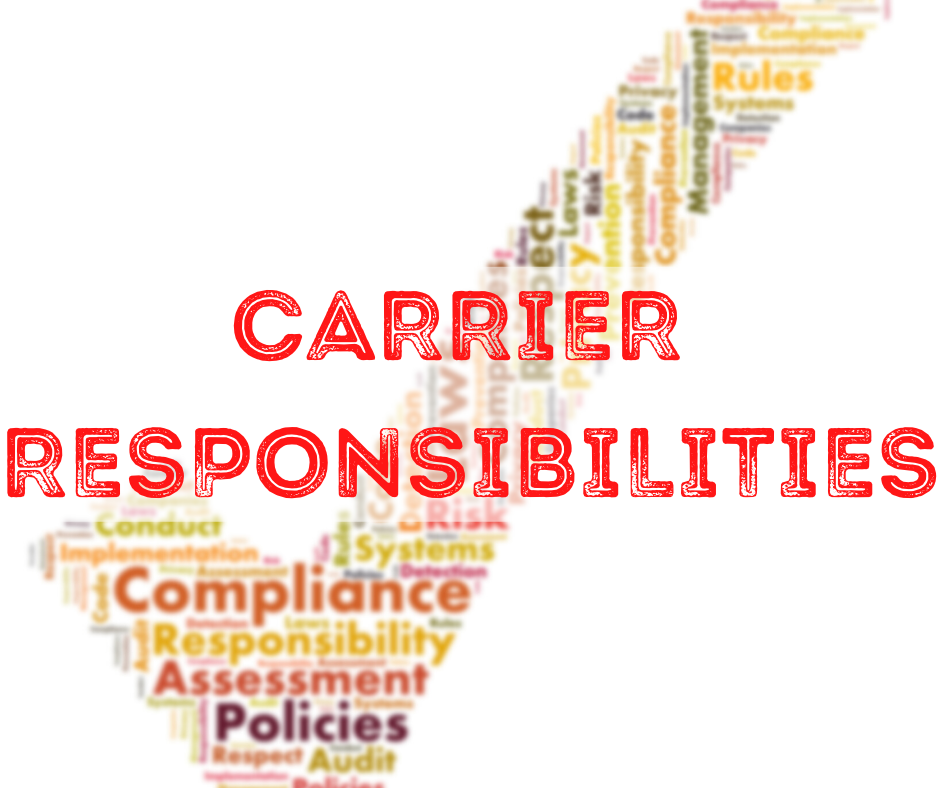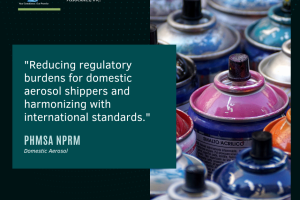Hazardous Materials Carrier Responsibilities

It’s no surprise that businesses who handle hazardous materials and items of HAZMAT are heavily regulated by the federal government. These regulations also apply to organizations that transport hazardous materials where the risk of public exposure to contaminants is greatly compounded. The first hazardous materials regulations in the United States were passed in 1975 and since then, several new laws and amendments have been enacted in the industry.
The Importance of Hazmat Regulations
For several years, the United States Navy used asbestos-based products to build ships. At the time, the harmful effects of asbestos were not known – leaving thousands of shipyard workers at risk of exposure with far-reaching consequences and millions of dollars lost in litigation. Now imagine if the Navy had known about the dangers of asbestos, and either replaced it with a less hazardous material or ensured that shipyard workers were properly trained and had the proper gear when working. Thousands of lives could have been saved. Hazmat Regulations ensure that the risks of exposure, and associated loss, are kept to a minimum.
While the Navy clearly didn’t intend to put its shipyard workers at risk and it has since taken steps to ensure their workers operate in a safe environment. What is also clear in this example is the importance of having hazmat regulations in place and the potential life-threatening repercussions – that sometimes span for generations – of violating these regulations.
The Pipeline and Hazardous Materials Safety Administration (PHMSA), is the federal body charged with ensuring that energy and other hazardous materials are transported in a safe manner. They issue and enforce hazmat regulations to safeguard human life and the environment. If you want to minimize your organization’s risk, you need to take proper care when handling and transporting hazardous materials.
Interim Changes to Penalties for Inflation
Recently, the PHMSA has made some changes to the minimum and maximum civil penalties for violations of federal hazmat laws. These penalties apply to the violation of a regulation, special permit, approval or order issued under those laws. The new regulations come on the heels of the two previous adjustment acts also mandated by the PHMSA. The most recent of these was the Federal Civil Penalties Inflation Adjustment Act of 2015, which dealt with improving the effectiveness of civil fiscal penalties. Agencies were expected to adjust civil monetary penalties after a preliminary “catch-up” adjustment via an interim final rulemaking (IFR). After the catch-up, agencies would then make annual adjustments to these penalties to cater for inflation. Prior to that, there was the Federal Civil Penalties Inflation Act of 1990, which dealt with establishing the methods that will ensure regular adjustment for inflation of civil monetary policies, improving the collection of these fines and maintaining the preventative effect that civil monetary policies have and promoting compliance.
The PHMSA has revised its regulations affecting the minimum and maximum civil penalty via an IFR to reflect the changes necessitated by the 2015 act. The new maximum civil penalty for knowingly violating the federal hazmat transportation is now $77,114, up from $75,000. If this violation results in serious illness, severe injury or the death of any individual, the penalty increases from $175,000 to $179,933. This higher penalty also applies if a hazmat violation results in significant destruction of property. This regulation does not have a minimum penalty. However, if a business or agency is cited for a training-related violation, they are liable for a minimum penalty of $463, up from $450. These new penalties took effect on August 1, 2016.
How to Remain Compliant
Many hazmat violations are a result of negligence or ignorance and not a willful disregard of the law. Those who have deliberately skirted around the rules in order to increase profits or save time in the near term will ultimately find their violations to be a costly affair. Not only could you lose thousands of dollars in penalties, but your company is exposed to civil and criminal lawsuits that can result in even further fiscal reliability. If your violations result in severe property damage or loss of life, you may even face jail time in addition to stiff fines. Your reputation will suffer irreparable damage, and you could jeopardize the well-being of your employees.
Businesses must strive to remain hazmat compliant by organizing continuous hazardous materials training for their staff members, particularly those in direct contact with hazmat. Employees must know how to properly identify and classify hazardous materials, how to mark and interpret hazard labels and proactively prevent hazmat violations. Businesses must also ensure that employees handling these materials have proper hazmat compliance certification. These skills will help them minimize their exposure to risk while on the job, protecting them from serious injury or death.
When it comes to handling hazardous materials, the best way to avoid penalties is to keep your team trained. At Transportation Compliance Associates, our hazmat training programs and consultations give your team the expertise and knowledge to keep you safe on the job and minimize risk every step of the way. Don’t wait for risk to catch up to you, take a proactive approach to hazmat management with Transportation Compliance Associates.





